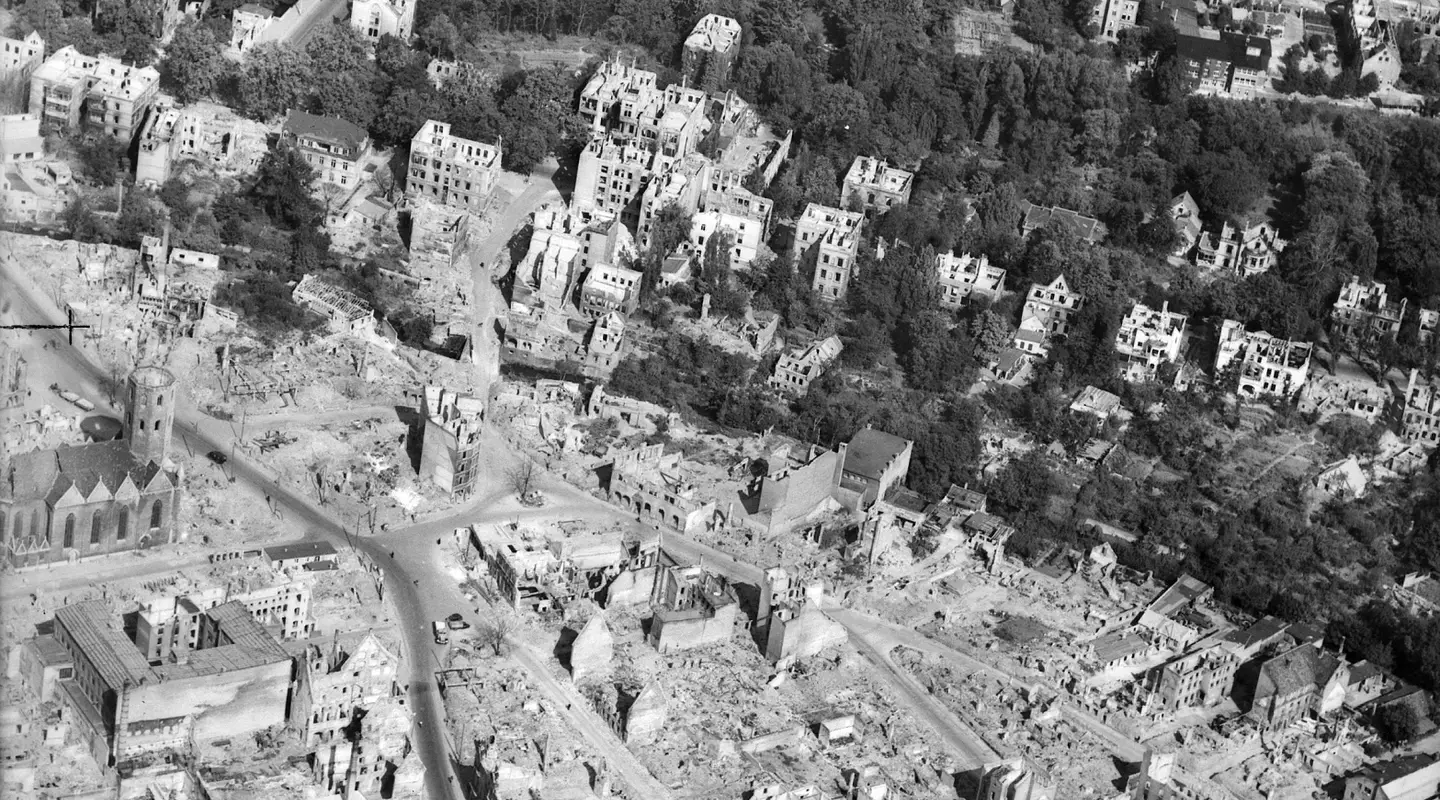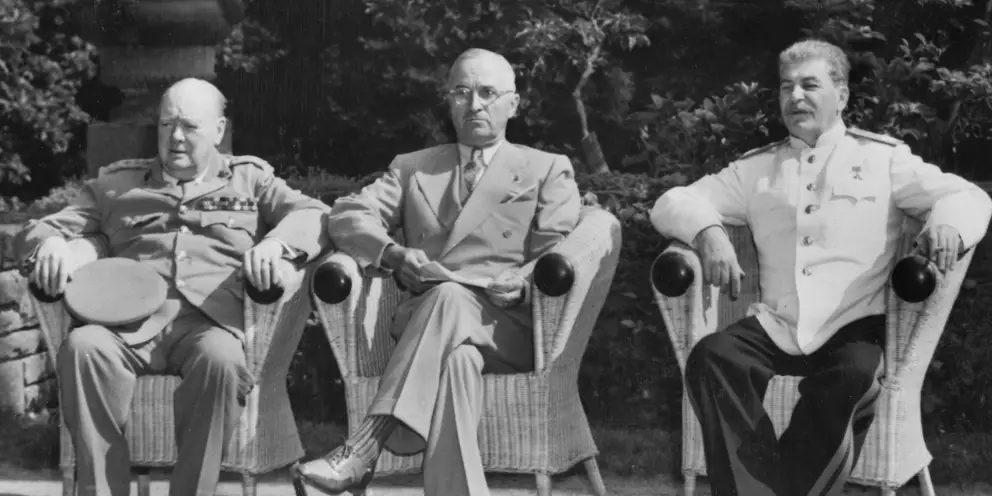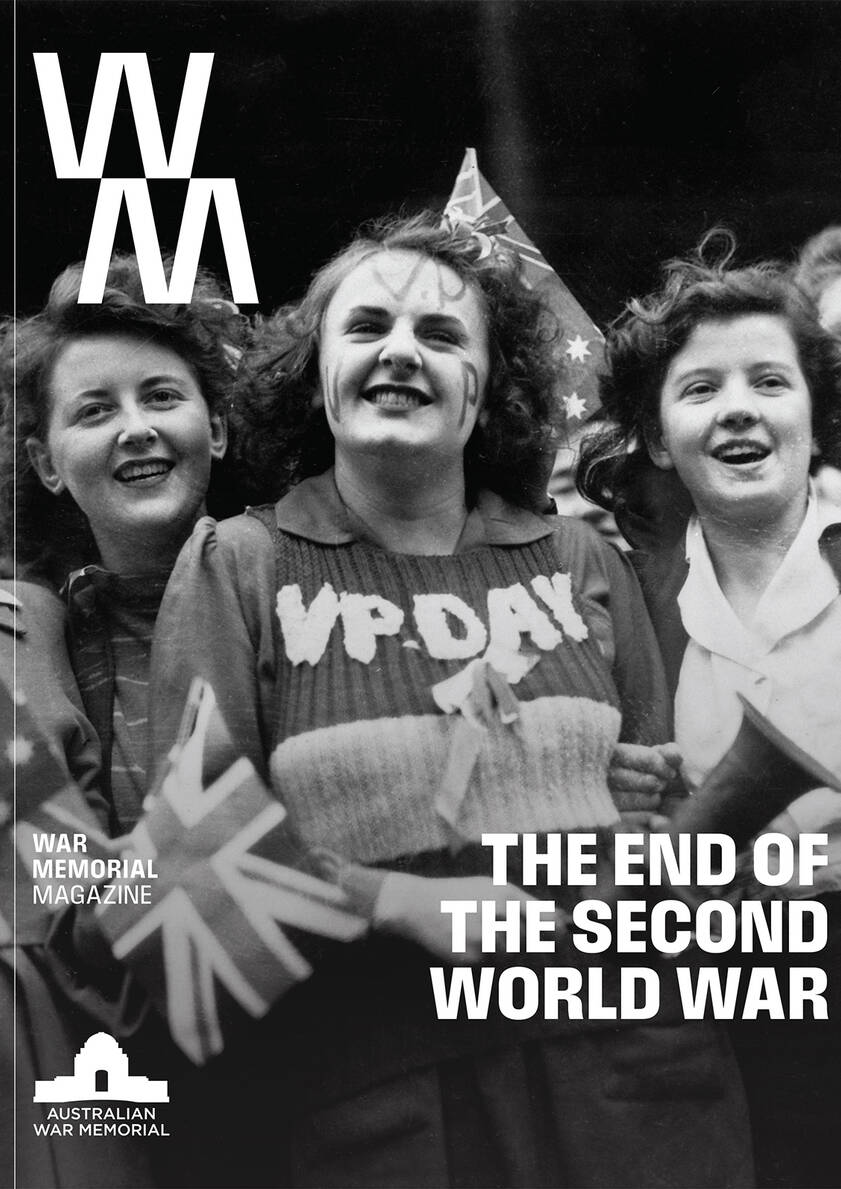The Nazi–Soviet war of 1941–45 was the largest and most costly conflict in human history. Between June 1941 and May 1945, Adolf Hitler’s Germany and Josef Stalin’s Soviet Union fought a war unparalleled in scale and brutality.
In April 1945, Soviet Marshal Georgy Zhukov had under his command the greatest concentration of ground forces ever assembled. His 1st Belorussian Front comprised eight infantry armies, two tank armies and three independent mobile corps, with them 3,200 tanks and 17,000 artillery pieces.
If lined up side by side, his 908,000 men would have crammed in four men per metre along the 215 kilometre north-south front they held to the east of Hitler’s capital.
Zhukov’s battle honours included some of the most desperate struggles of the Second World War: since 1941 he had stalled Hitler’s troops at the gates of Moscow and saved the Leningrad front from total collapse, orchestrated the counter-attack at Stalingrad, and crushed the Germans at Kursk and in Belorussia. Now he stood poised to take Berlin. It would be his greatest achievement.
Dawn offensive
At dawn on 16 April his massive offensive began when his troops set out from their positions 50 kilometres due east of Berlin. His two air armies pounded German defences, as did his concentration of guns, heavy mortars and Katyusha rockets. They delivered the heaviest bombardment of the war. Some 1,236,000 rounds were fired on 16 April alone – roughly half of them in the first 30 minutes of the attack – after which the Red Army infantry surged forward.
Their attack was accompanied by a novel tactic: 143 powerful searchlights – redeployed from Moscow’s now redundant air defences – were directed from the Soviet lines at the German defenders, intended both to blind the enemy and light the way for the advancing infantry.
Petr Sebelev, a Red Army engineer who had seen combat on the Eastern Front since 1941 wrote to his family:
“There has not been a day at the front yet like today … At four o’clock in the morning thousands of Katyushas and machine guns opened fire, and the sky was bright as day from horizon to horizon. On the German side, everything was covered with smoke and thick fountains of earth flying up in columns.
There were huge flocks of frightened birds flying around, a constant humming, thunder, explosions. Then came the tanks. In front of the whole column floodlights shone, which was to dazzle the Germans. And then people everywhere started shouting, ‘To Berlin! To Berlin!’.”
Petr Sebelev, a Red Army engineer
The German defenders who opposed Zhukov – General Theodor Busse’s 9th Army and General Hasso von Manteuffel’s 3rd Panzer Army – were outnumbered roughly ten to one.
Soviet command estimated that, given the overwhelming numbers involved in their attack and the relative weakness of the defenders, the German lines would collapse in quick order, and the Red Army would take Berlin within five days from the beginning of the operation.
A low level reconnaisance flight showing the bomb damaged areas Berlin, 1945.
A stalled start
The attack, however, did not go exactly to plan, and the Red infantry soon found itself bogged down at the foothills of the Seelow Heights, a steep outcrop of hills rising nearly 100 metres over the west bank of the River Oder and blocking their path to the German capital.
A reconnaissance-in strength conducted by reinforced Soviet rifle battalions from the 1st Belorussian Front on 14 April had penetrated as far as five kilometres into the German defences, but at this late stage in the war the German defenders were well aware of the Soviet ‘reconnaissance-in-strength’ tactic, and correctly predicted that the main attack would come two or three days later.
The massive bombardments that preceded the infantry attack, much like those performed before mass infantry attacks on the Somme 29 years before, mostly served to warn the Germans of the coming assault; and the Germans, who had withdrawn to their second line of defences, watched the artillery barrage destroy the deserted first line of defences, unharmed.
Making it harder for the Soviet attackers, the concentration of artillery had churned up the ground, mangled roads, and turned small towns into impassable tangles of rubble. Artillery also filled the air with dust and smoke, and as the Soviet infantry advanced, backed by Zhukov’s searchlights, they were simultaneously blinded by light bouncing off the air-borne dust and debris, and silhouetted against the glare – making them easy pickings for German marksmen.
It was at this point that an increasingly desperate Zhukov unleashed his two mobile forces – Colonel General Semyon Bogdanov’s 2nd Guards Tanks Army and Colonel General Mikhail Katukov’s 1st Guards Tank Army. The two armoured units were originally planned to advance only once the infantry had broken through the defences at Seelow; but Zhukov, in a move reminiscent of the desperate generalship that characterised the early stages of the Nazi–Soviet War, attempted to solve his problems by throwing in more men. The move only added to the confusion.
The tanks were unable to pass with ease over the jumble of rubble and churned, swampy ground created by the artillery bombardment. Where they could move, they became mixed with the huge infantry formations, causing immense traffic jams and a logistical nightmare.
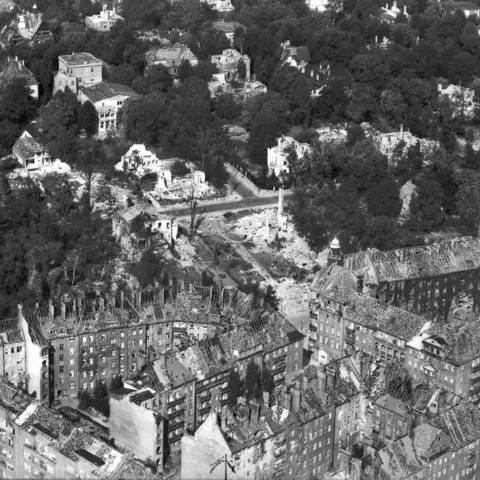
Aerial photograph of an area of Berlin showing the extensive damage caused by allied bombing.
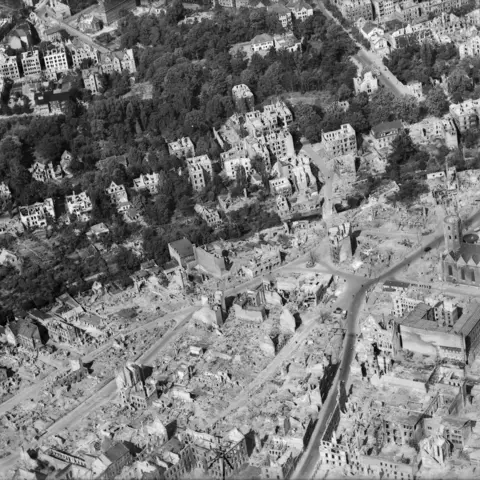
Aerial photograph of an area of Berlin showing the extensive damage caused by allied bombing.
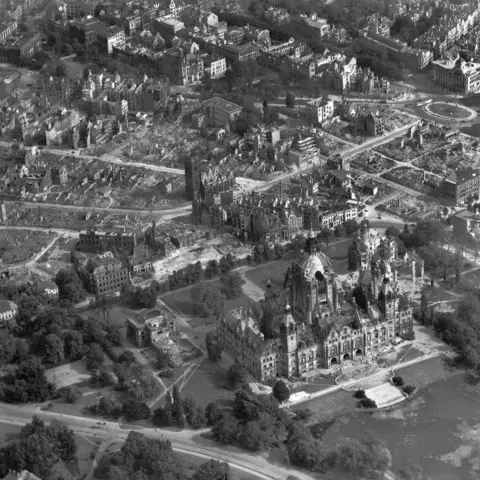
Aerial photograph of an area of Berlin showing the extensive damage caused by allied bombing. The large building in the foreground is the Charlottenburg Palace.
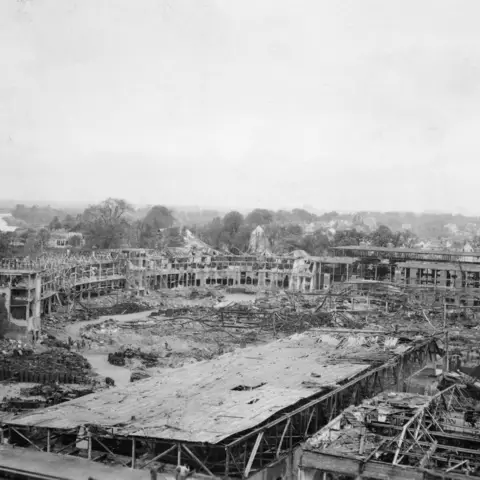
Berlin, Germany, c. 1945. Bomb damage to an industrial complex in Berlin.
One sergeant, named Safronov, of the 916th Rifle Regiment, reported four of his men crushed by a Soviet tank – and it is unlikely this was an isolated incident. It was not until after three days of heavy fighting that the Red Army finally broke through.
The path to Berlin lay clear.
Personalities and politics
Red Army commanders such as Zhukov had a well-deserved reputation for their sledgehammer tactics and the many men lost under their command, but they had also learned much about operational art by this late stage in the war. Why was it now, at the Seelow Heights, that Zhukov was willing to change his plans, commit a terrible operational error, and throw so many men into such a desperate battle?
One explanation lies in the intense rivalries that existed amongst the top Red Army commanders after four years of desperate warfare. South of Zhukov’s 1st Belorussian Front lay Marshal Ivan Konev’s 1st Ukrainian Front: 551,000 men organised into five infantry armies, two tank armies and five mobile corps. Zhukov and Konev had long butted heads; each was desperate to be the one that history would record had taken Berlin. While Zhukov became held up at Seelow, Konev’s forces made relatively easy progress south of Berlin towards the Elbe River.
Stalin, who had long cultivated the rivalry between the generals, now capitalised on it. On 17 April, Stalin blurred the demarcation lines between Zhukov’s and Konev’s forces. It had always been the Soviet intention for Konev to head south past Berlin, reach the River Elbe, then swing north so as to surround Berlin from the west. Stalin’s blurring of the lines opened the door for Konev, all too keen to steal Zhukov’s thunder, to reach Berlin first.
On the night of 17–18 April, Konev’s two tank armies advanced 100 kilometres west and then wheeled north to the southern outskirts of Germany’s capital.
Meanwhile, Marshal Konstantin Rokossovsky’s 2nd Belorussian Front – five rifle armies and three independent mobile corps – operating far to Zhukov’s north near Pomerania, but still part of the order of battle for what the Soviets called the Berlin Operation – was on 18 April also ordered to swing south and head for Hitler. Rokossovsky never seriously threatened in Zhukov or Konev’s race for Berlin, but taken alongside Konev’s advance south of the city, his moves shed some light on why Zhukov was so desperate to break through at all costs.
The other factor driving Zhukov’s actions at Seelow was the pressure from above. Stalin had a genuine desire to end the war as soon as possible.
The Soviet Union had suffered appalling losses in the Second World War – in total, some 27 million Soviet citizens, roughly half of them civilians, were killed in the maelstrom that followed the Axis invasion of 22 June 1941. In that time 70,000 Soviet cities, towns and villages were destroyed, along with six million houses, 98,000 farms, 32,000 factories, 82,000 schools, 43,000 libraries, 6,000 hospitals and many thousands of kilometres of roads and railways.
Soviet propagandists had whipped Red Army troops into a frenzy: “There will be no pity. They have sown the wind and now they are harvesting the whirlwind!”
Stalin wanted to make sure that the honour of taking Hitler’s capital fell to his armies: he felt that, given his armed forces had shed the most blood, his armed forces had the right to enact the final retribution. British and American forces were cutting through Germany’s west with alarming speed. For any flag but the red Soviet flag to fly over Berlin would be an insult to his country’s sacrifice.
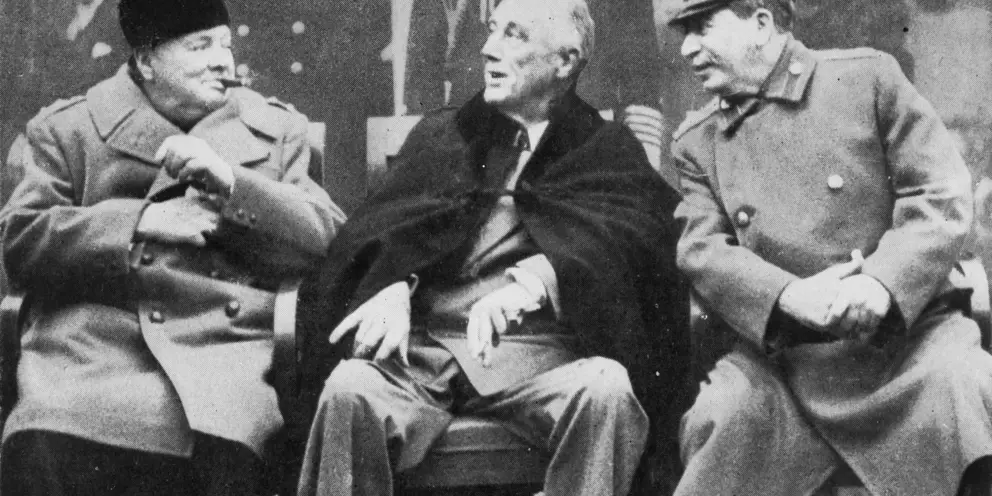
Yalta, Black Sea, USSR. 1945-02. British Prime Minister Winston Churchill, in a Caucasian black fur hat, with US President Franklin Roosevelt (showing evident signs of failing health) and Soviet Marshal Josef Stalin at the Yalta Allied Conference.
Bombastic proclamations of honour and retribution were not the only factor in Stalin’s calculations. The pressure he put on Zhukov – and Zhukov’s resulting determination to press on at full speed – was also driven by the post-war calculations that dominated Stalin’s imagination.
Zhukov later wrote in his memoirs that in planning for the Berlin operation, Stalin’s actions were not dictated by military reality, but by the “military–political situation.”
Indeed, the original plan for the Berlin Operation, in which Konev would surround the city from the west, was orchestrated as much by the military necessity of encircling the enemy positions as preventing the British and Americans from approaching Berlin from the west.
Stalin – aware through his network of spies of the United States’ Manhattan Project to develop the atomic bomb – also had an eye on ensuring that he captured the Kaiser Wilhelm Institute for Physics in Dahlem, south-west Berlin, the leading German centre for research into the atomic bomb.
Distrustful allies
Stalin – whose political instincts had been forged in the Hunger Games of the Russian Revolution, the Civil War, and post-Lenin internal Soviet politics – never trusted the Western Allies or their motives during the war.
He was convinced that their inability to open a second front before June 1944 was not so much about the impossibility of the task (that is, a matter of British and American combat and logistical readiness); rather it reflected a Western willingness for the Soviet Union and the Axis powers to bleed themselves white.
When the Americans unexpectedly captured the Ludendorff railway bridge at Remagen on the Rhine on 7 March, and the British made a similar bridgehead further north two weeks later, Stalin’s paranoia grew even more.
In Stalin’s reckoning, Germans were surrendering en masse to the Western Allies so as not to fall into Soviet hands. He further suspected that it was only a matter of time before the Germans agreed to a separate peace with the West, or even agreed to join forces with them in a fight against the tide of Bolshevism in the east.
Stalin’s suspicions were not helped by fierce anti-Bolshevik critic Winston Churchill, who had argued for a long time that the Americans and British “should shake hands with the Russians as far to the east as possible”.
Eisenhower too flirted with the idea. On 8 April he allowed Major General Alexander Bolling’s 84th Infantry Division to push for Berlin, and it was not until a week later, after the American forces had made significant gains and several bridgeheads over the Elbe, that he changed his mind.
The Americans estimated that taking Berlin would cost some 100,000 casualties – too high a price for a target that had little strategic importance beyond the symbolic – and they once again resolved to adhere to demarcation lines agreed with Stalin and meet the Red Army on the Elbe.
Meanwhile, Stalin consistently acted with his characteristic duplicity. In late March Eisenhower sent him a message confirming that the Americans had no intention of pressing for Berlin (despite the orders he would later give to Bolling), and proposing two meeting areas for the Allied Armies: one on the upper Elbe in the Erfurt–Leipzig–Dresden area, the other in the Danube valley.
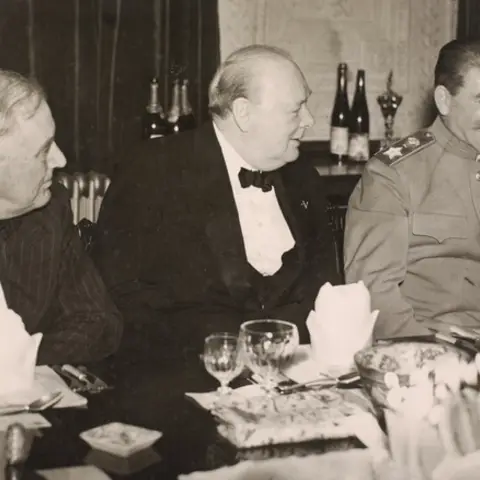
Informal portrait of L-R: President of the United States of America Franklin D. Roosevelt, British Prime Minister Winston Churchill and Soviet Premier Joseph Stalin at a birthday dinner held for Winston Churchill during the Tehran Conference. The Tehran Conference was the first of two wartime meetings between the three leaders.
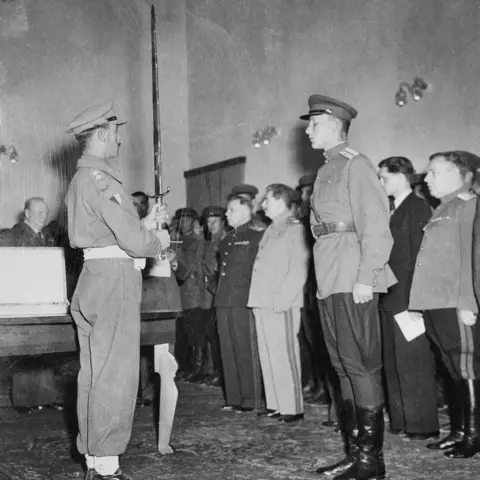
The Sword of Stalingrad, gift of His Majesty King George VI to the citizens of Stalingrad in token of the homage of the British people, was handed over to Marshal Stalin by Mr Winston Churchill at the ceremony held in the Russian Embassy in Teheran during the Tripartite Conference. The British Army Officer selected to hand over the Sword to Mr Churchill takes it from its case before the presentation.
April Fool's Day
On 1 April 1945 Stalin responded to Eisenhower that Soviet and American plans coincided perfectly, agreed that Berlin was not of vital strategic importance and that only secondary Soviet forces would be allocated to the German capital.
He added that the bulk of the Soviet effort would be to link up with the Americans to the south sometime in late May, “However, this plan may undergo certain alterations, depending on circumstances.”
On the same day that he sent this message, he approved Stavka’s plan that placed Berlin at the centre of Soviet operations and allocated more than 2.5 million men to the task – the entire operation planned to begin on 16 April.
It was the greatest April fool in modern history.
Antony Beevor, military historian
Exact figures for the number of Red Army troops killed during Zhukov’s desperate attack at Seelow are difficult to estimate.
Beevor’s claim of 30,000 killed is almost certainly incorrect – more recent research suggests that Zhukov’s entire losses for the three weeks of the Berlin Operation were 38,000 – but there is little doubt that the cost was high.
Total Soviet losses in the Battle of Berlin (all forces, not just Zhukov’s) were 350,000 casualties, roughly one quarter of them killed.
So too was the cost on the German defenders, and the civilians in Berlin once the Red Army broke through. More than 100,000 German civilians are thought to have been killed in the Battle of Berlin, and the widespread looting and rape that accompanied the Red Army’s advances into Germany are well known.
The following line, written by Petr Sebelev, the Red Army engineer who had fought at the Seelow Heights, was intended at its time of writing to honour the doubtless selfless heroism of his comrades. Eight decades later, and reflecting on the motivations of those at the very top of the Soviet command, they take on a new meaning: “Today no one is thinking about death… Everyone is thinking only about how quickly they can roll into Berlin”.
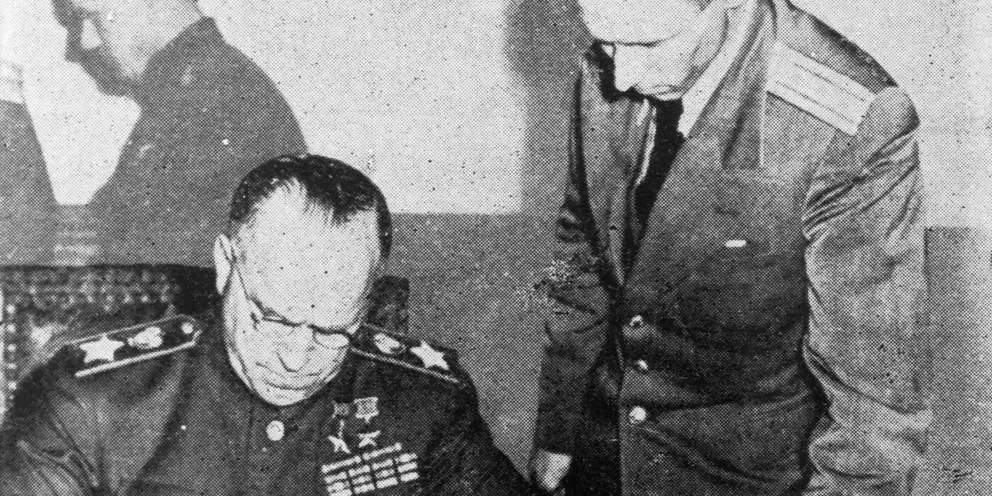
Marshal Zhukov signing the German unconditional surrender on behalf of the USSR.
